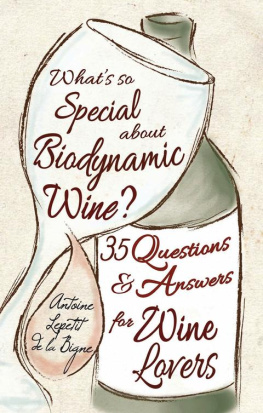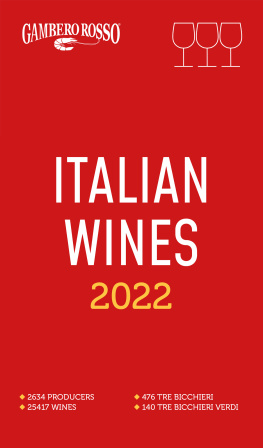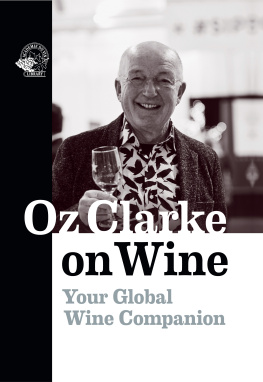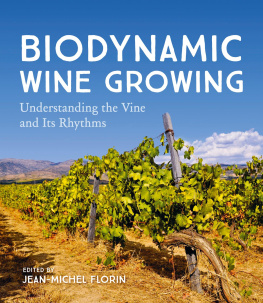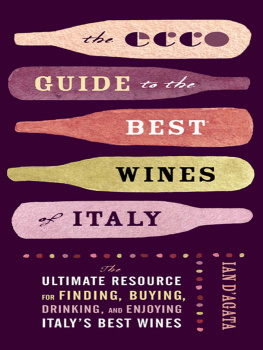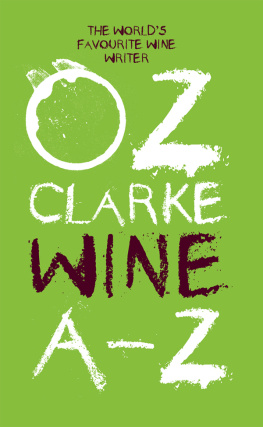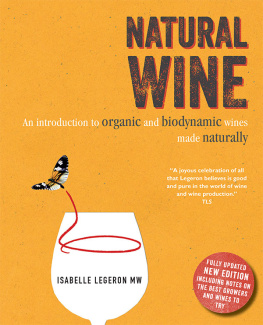The vines at Lightfoot & Woolfville in Canada.
Wine should be a pure reflection of its soils and of the entirety of its environment. We should question everything that takes us further away from that fact.
The mist rolls across Spring Mountain at Cain Vineyard & Winery in Napa.
Elisabetta Foradori getting hands-on in her Italian winery.
As with all artisan winemakers, Ray Nadeson at Lethbridge in Victoria is hands on in both vineyard and cellar.
Wine Revolution
The Worlds Best Organic, Biodynamic & Natural Wines
Jane Anson


First published in 2017 by
Jacqui Small
An imprint of The Quarto Group
7477 White Lion Street
London N1 9PF
Text copyright 2017 by Jane Anson
Design and layout copyright Jacqui Small 2017
The authors moral rights have been asserted.
All rights reserved. No part of this book may be reproduced, stored in a retrieval system or transmitted, in any form or by any means, electronic, electrostatic, magnetic tape, mechanical, photocopying, recording or otherwise, without prior permission in writing from the publisher.
Publisher: Jacqui Small
Managing Editor: Emma Heyworth-Dunn
Senior Commissioning Editor: Fritha Saunders
Assistant Editor: Joe Hallsworth
Designer: Luke Fenech
Editor: Hilary Lumsden
Photography: Kim Lightbody, pages: .
Production: Maeve Healy
Digital edition: 978-1-91112-775-8
Hardcover edition: 978-1-91112-729-1
A catalogue record for this book is available from the British Library.
Farm to Table Wines
Chez Panisse opened its doors in downtown Berkeley on August 28, 1971. The set menu for the first night, priced at US$3.79, was pt en crote, salad, duck with olives and almond tart. The first plates of food didnt make their way out of the kitchen until nearly 9pm, and it would take a few weeks before things really settled in. But in this two-storey Victorian townhouse, founders Alice Waters and Lindsey Shere ushered in the foodie, farm-to-table movement that has since been championed by Dan Barber, Gaston Acurio, Hugh Fearnley-Whittingstall, Umberto Bombana all rock-star chefs who produce delicious food in touch with nature, with the seasons, with the land.
The idea of buying locally, cooking with seasonal ingredients, supporting responsible farming has become so accepted as to barely raise an eyebrow. And yet when it comes to wine, it is still considered geeky and kind of pointless to care about the same thing. After all, arent all grapes organically grown in a field somewhere?
Well, the short answer to that is no. Just like much of the food we eat, plenty of wine is produced for a mass audience, with shortcuts taken along the way to ensure that they taste good without costing a fortune to make.
So, shouldnt we start celebrating the winemakers who buck this trend, and instead apply the Chez Panisse philosophy to their vineyards? The ones who treat their workers fairly, reduce their carbon emissions, farm without pesticides? Or those who plant hedgerows to encourage biodiversity, use grapes that are indigenous to their regions and add as little as possible during the winemaking process?
There are plenty of them out there. Aubert de Villaine, Elisabetta Foradori, Pepe Ravents, Jean-Laurent Vacheron, Olivier Humbrecht, Eloi Durrbach, Christine Vernay, Nicolas Joly, David Paxton these are winemakers who should be talked about in the same breath as chefs like Waters, Barber and the rest.
Thats what this book is about a celebration of these committed, dedicated producers. If their wines are in here, it is because they taste brilliant, will enhance what youre eating and provide a moment of shared happiness with whoever you are drinking them with. But they also all come with a story, from people who care about authenticity, and want to preserve the land that nourishes their grapes.
Nebbiolo at G.D. Vajra in Piedmont.
BIG VERSUS SMALL
Ive been living in France since 2003. Shopping seasonally, going to local markets, buying direct from farms has slowly but surely become second nature. It has brought me closer to the food I eat, and its fun. Extending that way of thinking about food to wine seems like the best way to capture that enjoyment in our glass. And its worth pointing out that I live in one of the biggest wine regions of them all; Bordeaux.
This is a place where the image is painted of men in suits making polished wines. Youll find several Bordeaux wines in this book that are the opposite of that idea, and there are plenty more that I didnt have the space to include. But, living here has helped me to understand that authentic wine is not as simple as big versus small. Its why youll find some of the worlds biggest and most prestigious names here, alongside some of the smallest single-person operations. Whats important is that each winemaker supports an idea of farming that is respectful of the future, and that looks to capture a snapshot of time, place and culture in a glass of wine.
Its not a definitive list how could it be? I have had invaluable help and advice from some of the greatest, most switched on sommeliers around the world, who understand exactly why we should think about artisan wines in the same way as we do about farm-to-table food. They have helped me, along with many wonderful consultants, retailers and friends, to discover many of these amazing wines that I am so excited to share with you. Throughout the book you will find advice from them on food styles that bring out the best in the chosen wines.
Deciding who to include in the final list has been thrilling, challenging and enormously tough, and I apologize right now for any missing names. But thats the magic of wine; there is always something new to discover.
Pepe Ravents ploughing with horses at Ravents i Blanc in Spain.
Food & Wine
Besides the artisan, handcrafted method of production, there's another reason these are farm-to-table wines. It's because that's where they belong on a table over lunch or supper, or served outside with a picnic, or in a bar with a few local tapas or sharing-plate specialities.
Food and wine are natural friends, and finding the right combination can heighten the pleasure of both. Pairing them can be as easy or complex as you like, and youll find suggestions throughout this book from sommeliers who work in some of the worlds leading restaurants and bars. In some cases I have also asked the producers for their recommendations, or simply suggested pairings that I have found work particularly well.




